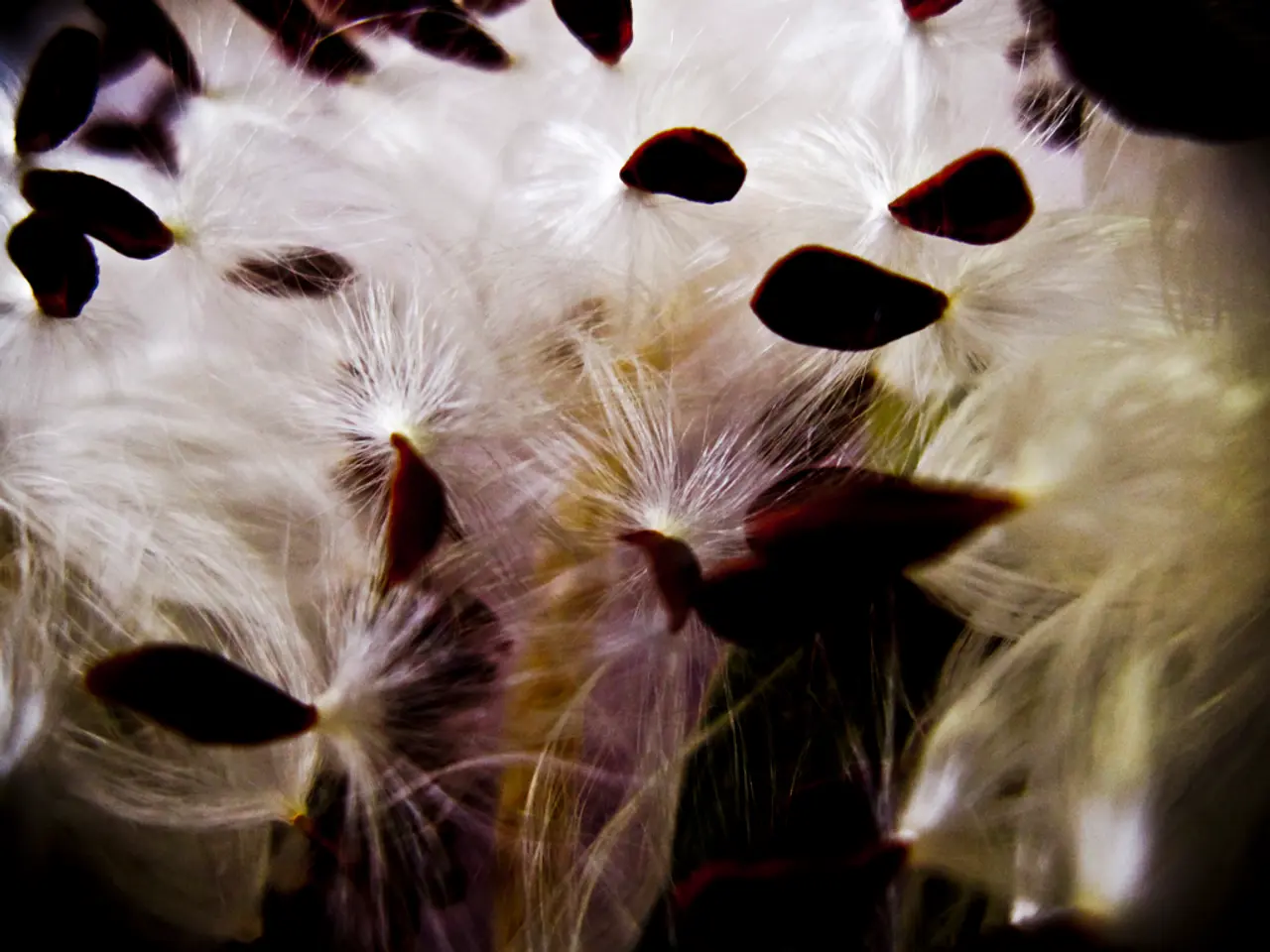Methods for Extending the Current Season for Optimal Seed Collection
In the late summer and autumn season, aster plants, with their vibrant blooms, grace many gardens. These resilient flowers, which can continue to bloom until the first frosts, are not only beautiful but also beneficial for pollinators. Here's a comprehensive guide on how to care for aster plants and collect high-quality seeds for the next growing season.
Watering
Aster plants thrive in nutritious, loose, neutral soil with no excess nitrogen. Regular, moderate watering is necessary, especially during dry periods. However, it's crucial to ensure good drainage to prevent root rot. Keep the soil moist but well-drained to establish strong roots for your aster plants.
Pruning (Deadheading)
Pruning spent flowers, or deadheading, is essential for promoting continuous blooming and maintaining plant vigor. If branches flop or become weak, cut them back to the base to rejuvenate the plant. Regular pruning also encourages the formation of new buds on aster plants.
Harvesting for Bouquets
To enjoy aster blooms indoors, cut them when they are fully open but not yet fading, using sharp scissors or pruners to avoid damaging the stems. Regularly harvesting flowers can also stimulate more blooms.
Seed Collection
To collect high-quality aster seeds, let some flowers mature on the plant until the seed heads dry thoroughly. Carefully collect mature seeds by hand, taking care to avoid losing the small seeds inside the flower heads. The collected seeds should be stored in a cool, dry place.
Additional Tips
- The soil around aster plants should be loosened and weeded for good ventilation and access of air to the roots.
- Avoid watering the leaves of asters to prevent fungal diseases.
The Aster novae-angliae
Aster novae-angliae, a hardy and low-maintenance variety, is adaptable to various climates, making it suitable for diverse garden conditions. This versatile plant is an ideal choice for supporting pollinators.
In summary, this care routine ensures healthy aster plants with prolonged flowering and the ability to collect high-quality seeds for future growth.
| Aspect | Guidance | |-----------------------|--------------------------------------------------| | Watering | Keep soil moist but well-drained | | Pruning/Deadheading | Remove spent blooms; cut back weak branches | | Harvesting for Bouquets| Cut fully open flowers with sharp tools | | Seed Collection | Allow seeds to dry on plant before harvesting |
- Maintaining a home-and-garden focused on sustainable practices, incorporating aster plants into your home-and-garden lifestyle provides vibrant blooms and benefits for pollinators.
- To ensure a continuous and plentiful display of aster blooms, utilize the provided care guide, including regular watering, pruning, harvesting, and seed collection, and choose resilient varieties such as Aster novae-angliae.





